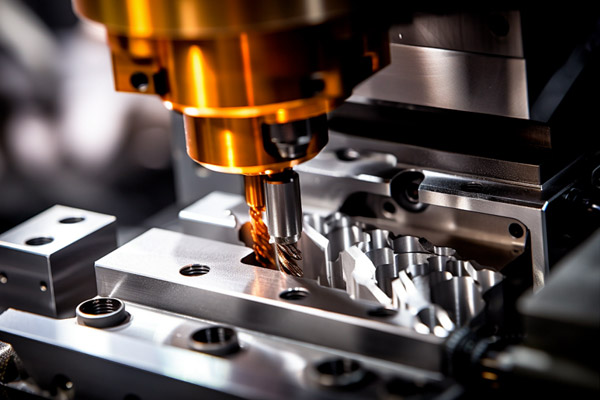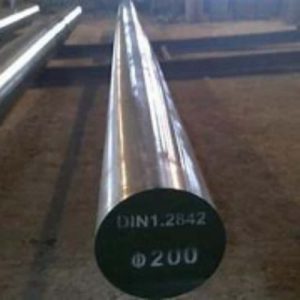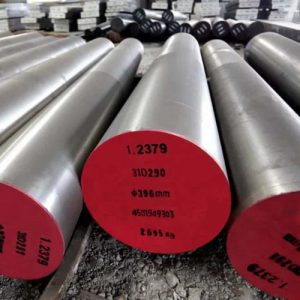Welcome to My Blog!
Before we dive into the content, I’d love for you to join me on my social media platforms where I share more insights, engage with the community, and post updates. Here’s how you can connect with me:
Facebook:https://www.facebook.com/profile.php?id=100090797846538
Now, let’s get started on our journey together. I hope you find the content here insightful, engaging, and valuable.
Table of Contents
Introduction

When it comes to precision engineering, the choice of material is paramount. Among the various options available, stainless tool steel stands out as a superior choice. This blog delves into the reasons why stainless tool steel is ideal for precision applications, exploring its properties, benefits, and real-world applications. By the end of this article, you’ll have a comprehensive understanding of why this material is a go-to for engineers and manufacturers.
The Unique Properties
Exceptional Corrosion Resistance
One of the most notable properties of stainless tool steel is its exceptional corrosion resistance. This characteristic is crucial for precision components that are exposed to harsh environments or corrosive substances. Unlike regular tool steels, stainless tool steel contains a significant amount of chromium, which forms a passive layer of chromium oxide on the surface. This layer protects the material from rust and corrosion, ensuring longevity and reliability.
High Hardness and Wear Resistance
Precision tools and components often undergo significant wear and tear. Stainless tool steel is renowned for its high hardness and wear resistance, making it an excellent choice for applications that demand durability. The material can withstand high levels of stress and friction without deforming or losing its edge, which is essential for maintaining precision over time.
Excellent Machinability
Despite its hardness, stainless tool steel offers excellent machinability. This means it can be easily shaped, cut, and finished to meet precise specifications. The material’s machinability is a boon for manufacturers, as it reduces production time and costs while ensuring high-quality results. This property is particularly important in the creation of intricate and complex components.
Applications in Precision Engineering
Medical Instruments
In the medical field, precision is non-negotiable. Stainless tool steel is widely used in the manufacture of surgical instruments, implants, and other medical devices. Its corrosion resistance ensures that these instruments remain sterile and safe for use, while its hardness and wear resistance guarantee long-term performance.
Aerospace Components
The aerospace industry demands materials that can withstand extreme conditions and maintain precision under stress. Stainless tool steel is used in the production of various aerospace components, including engine parts, landing gear, and structural elements. Its ability to resist corrosion and wear makes it an ideal choice for these critical applications.
Automotive Parts
In the automotive industry, precision and durability are key. Stainless tool steel is employed in the manufacture of various automotive parts, such as gears, shafts, and bearings. Its high hardness and wear resistance ensure that these components can endure the rigors of daily use, while its machinability allows for the production of complex shapes and designs.
Comparing with Other Materials

Stainless Tool Steel vs. Carbon Steel
When comparing stainless tool steel with carbon steel, several differences become apparent. While carbon steel is known for its strength and affordability, it falls short in terms of corrosion resistance. Stainless tool steel, on the other hand, offers superior resistance to rust and corrosion, making it a better choice for precision applications in harsh environments.
Stainless Tool Steel vs. High-Speed Steel
High-speed steel is another material commonly used in precision engineering. It is known for its ability to retain hardness at high temperatures, making it suitable for high-speed cutting tools. However, stainless tool steel surpasses high-speed steel in terms of corrosion resistance and machinability. This makes stainless tool steel a more versatile option for a wider range of precision applications.
Benefits in Precision Applications


Enhanced Longevity
One of the primary benefits of using stainless tool steel in precision applications is its enhanced longevity. The material’s resistance to corrosion and wear ensures that components made from stainless tool steel have a longer lifespan compared to those made from other materials. This translates to reduced maintenance costs and fewer replacements over time.
Superior Performance
The steel’s combination of hardness, wear resistance, and machinability results in superior performance in precision applications. Components made from this material can maintain their precision and functionality even under extreme conditions, making it a reliable choice for critical applications.
Cost-Effectiveness
While the steel may have a higher initial cost compared to some other materials, its long-term cost-effectiveness cannot be overlooked. The material’s durability and reduced maintenance requirements result in lower overall costs, making it a financially sound investment for precision engineering projects.
Table: Comparison with Other Materials
| Property | Stainless Tool Steel | Carbon Steel | High-Speed Steel |
|---|---|---|---|
| Corrosion Resistance | High | Low | Moderate |
| Hardness | High | High | Very High |
| Wear Resistance | High | Moderate | High |
| Machinability | Excellent | Good | Moderate |
| Cost | Moderate | Low | High |
Conclusion
Stainless tool steel is a material that excels in precision engineering applications. Its unique properties, such as exceptional corrosion resistance, high hardness, and excellent machinability, make it an ideal choice for a wide range of industries, including medical, aerospace, and automotive. When compared to other materials, stainless tool steel offers enhanced longevity, superior performance, and long-term cost-effectiveness. By understanding the benefits and applications of stainless tool steel, engineers and manufacturers can make informed decisions that lead to better outcomes in their precision engineering projects.
FAQ
What makes stainless steel different from regular tool steel?
The steel contains a higher percentage of chromium, which provides it with superior corrosion resistance compared to regular tool steel. This makes it ideal for applications in harsh environments.
Can stainless tool steel be used in high-temperature applications?
Yes, stainless tool steel can be used in high-temperature applications. However, its performance may vary depending on the specific grade of stainless tool steel and the temperature range. It is essential to select the appropriate grade for high-temperature use.
Is stainless steel more expensive than other tool steels?
The steel generally has a higher initial cost compared to some other tool steels, such as carbon steel. However, its long-term cost-effectiveness, due to its durability and reduced maintenance requirements, often makes it a more economical choice in the long run.
How does stainless tool steel perform in terms of machinability?
The steel offers excellent machinability, making it easier to shape, cut, and finish compared to some other high-hardness materials. This property is particularly beneficial in the production of complex and intricate components.
What are some common applications of stainless tool steel?
The steel is commonly used in the manufacture of medical instruments, aerospace components, automotive parts, and various precision tools. Its properties make it suitable for applications that demand high levels of precision, durability, and corrosion resistance.

